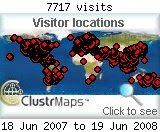A yellow ທຸງ (thoung, aka. ตุง dtung in Lanna Thai) on the grounds of Wat Mahathat:

Much like
some of those that the cat saw
hanging from the ceiling of
Wat Sing Jai, a Tai Lue temple in Muang Sing, &
at another temple (upper left) in Chiang Khong, & some other places in Chiangrai.
Tai Lue (
ไทลื้อ), Tai Yai & some other Tai ethnic groups weave such banners as offerings for the Buddha, to make merit for one's future life, as offerings for ancestors, & on occasions like ordinations, the completion of a new temple building, & funerals. The cat has been told that in parts of North Thailand, red coloured ones are planted at sites of 'dtaai hohng' (ตายโหง unnatural or violent death) e.g. site of fatal accident along a road, to help the deceased to be reborn again. Without them the spirit will remain behind until another victim comes to take his/her place. The cat has not seen such examples before, but imagines that they must be placed like the white wooden crosses it has seen along highways in Australia & other Western countries.
There are motifs like
hongsa, elephants, horses, naga, diamond shapes, thaat (stupa), castle-like structures that represent heavenly abodes, structures that look like
this, & other stuff that the cat cannot figure out, like
this (click to zoom in on amazing detail),
this & this:

Thin strips of bamboo are used to stiffen the banners, which are like ladders to help souls of the deceased climb from hell up into heaven. In the laomeow consultants' Tai Lue village, villagers make rockets (
a la Boun Bangfai, the rainmaking 'rocket festival') to go with such banners during funerals. Presumably one needs a hole in the sky in order to ascend to heaven?
Traditionally these
banners are woven from cotton, & may be decorated with tassels,
little pompoms, paper flowers, or even membranaceous winged seeds (from some pterocarp species?) & banknotes tied to them along the fringes. Tai Lue are known for their
signature black+red+white versions, a
colour combination used for their
pha chet luang (shoulder scarf),
blankets,
bedsheets, coffin covers,
shoulder bags, &
other textiles as well. Now modern
'shortcut' versions (Tai Yai example from Chiangrai) are made by cutting long strips of cloth or even lace, no weaving required.
Some banners are made with 16 sections to represent the '16 levels of heaven'...think this refers to the 16 'realms of form' (
rupaloka), part of the
31 planes of existence in
Buddhist cosmology. In some parts of Thailand, a short banner with three 'tails' called
thoung saam haang (ตุงสามหาง lit. banner three tails) is used in funeral processions.
No matter how long a bamboo pole you use, no matter how high you raise it in the sky...what makes you think you can ever hide a fish from a cat?

Anyone who knows if the fish at the top of the pole of the banner has any special meaning, please enlighten the cat. Some links for those who would like to find out more about 'thoung' (mostly Thai-only websites):
area.obec.go.th/phayao1/upa/Gong.htm (TH)
www.stjohn.ac.th/Department/info/tung.html (TH)
lanna.mju.ac.th/lannaequipments_detail.php?recordID=36 (TH)
www.thaitextilemuseum.com/English/Variety/tung.pdf (EN)
Textiles of Southeast Asia: Tradition, Trade & Transformation on Google Books (EN)
cultural.payap.ac.th/story/N8BWra1Sat23057.pdf (TH)







































